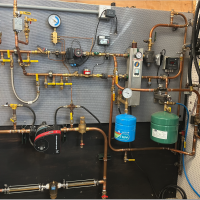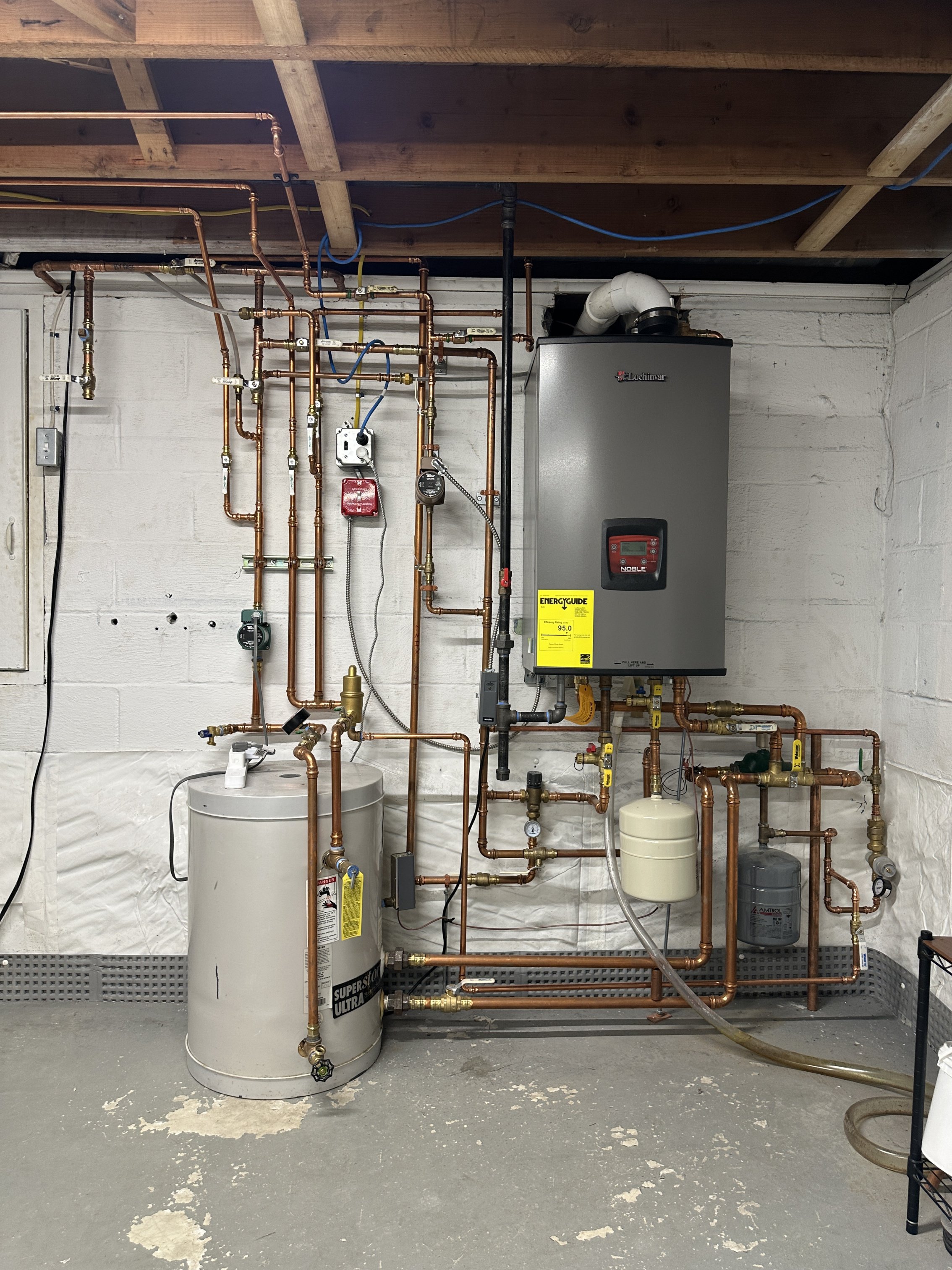Best Of
Re: Dual Element Smith HE2 Baseboards
a couple used ci radiators would be the cheapest option.
Re: Can you please critique this boiler setup that was installed in my house two wks ago
Had a great visit from
GW Gill he gave a diagnosis of the installation gonna send it to the installer
Re: Steam Boiler not heating main - looking for steam pro to evaluate near boiler piping (Fairfield CT)
Gotcha, yea I think I've taken my DYI skills to its limits. It snowed in CT this past weekend and its COLD in this house. The second floor is much warmer but its pretty chilly on the main floor. Radiators just aren't kicking off heat like they should. Its been tough to find someone who seems to know steam. So I figured I'd give this forum a try. I appreciate all the help and feedback, but at this point I need James Watt in here now.
Re: Radiant Heat. Should I raise the temp?
I haven't read through these replies but I thought it might be helpful to know that for the 15 months of my 56 years on earth I owned a house which I sold 7 months ago. In it, I installed radiant floor heating in a couple bathrooms and a hydronic towel warmer. I used the same Lochinvar Noble boiler you've got there, I think, but mine was a combi. When it ran for RFH it short cycled and drove me nuts. When I finally installed a buffer tank, the whole system worked beautifully. I found in my shop a 20-gallon indirect water heater and used it as a heat exchanger to keep my floor water at around 130° without a mixing device. Instead of the floor becoming my heating load, my indirect with a long adjustable-differential aquastat became my load. The cycles ran longer and less frequently and the cold spots on the floor disappeared. What a difference. At great risk, I'm posting a picture of my setup here. There's plenty to criticize about the installation but whatever. It was my house using repurposed parts and shortcuts I knew I could get away with.
 JohnNY
JohnNY
Re: Rheem Water Heater
Hi and thanks! I'm always trying to learn as well, so a question or two… Are the old aerators a higher flow rate than the ones you replaced? Also, some aerators mix in more air than others. Is the water you get now less foamy? With these questions, I'm trying to figure out just where the air you saw in the water came from. 🤔
Yours, Larry
#1 boiler killer you're NOT testing (Low pH will destroy your boiler fast)
In this weeks video I talk about pH in the boiler water, how to test, and why you should.
Re: Indirect water heater as steam(water) to hydro zone HX (poor heat transfer)
the sludge would be on the part of the indirect connected to the boiler. If that is the coil, then that is the sludged portion
If the tank is just the hydronic water, mineral scaling is possible. That is generally from ongoing fill water being added
Descaling the outside if the coil is not so easy
At that age??
Go with a smooth coil rank
Laars, bradford white, Lochinvar, Bock are some brands
 hot_rod
hot_rod
Re: indicator lights on SR504-EXP
It is possible the zones that are warm that have indicator lights that are off have recently been satisfied their thermostat demand.
Re: Burnham boiler question
The gas technician came yesterday but was not able to turn on the gas. He told me the inlet pipe needs repair service and the company will submit a working permit to the city. so it will be weeks to wait.
I already filled winterization fluid to the p traps and toilet bowls. last weekend I already closed the water main valve and drained all faucets, but yesterday when I tested the faucets, there was still abundant water flowing out, so I let all the water drained out again. There could be water remaining inside the piping that couldn't be drained completely. do you use something like an air compressor to blow out all the remaining water?
Re: Is water hammer damaging and/or dangerous?
A rad on my third floor started banging at the start of the heating cycle this past October. I used a car Jack to raise the supply side of the one pipe system by 1/4” and kept it elevated for a day. The problem disappeared. Slipped a 1/16” thick washer underneath one leg of the rad on the supply side and no more banging-yet.
I have a 5’ Sunrad on the first floor that bangs just once at the end of the heating cycle, though not very loudly. I am not quite sure if it is water hammer or just the radiator expansion/contraction noise. Is it common for water hammer to occur at the end of a heating cycle, approx. 5 mins after the boiler has shut off?


